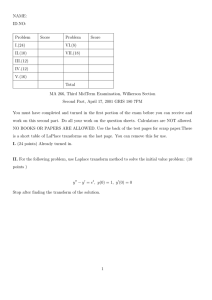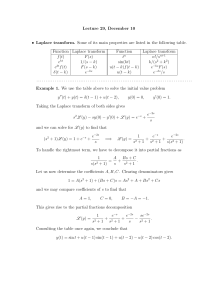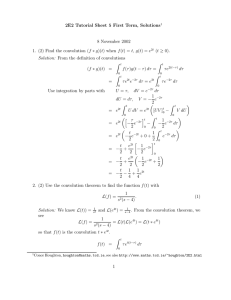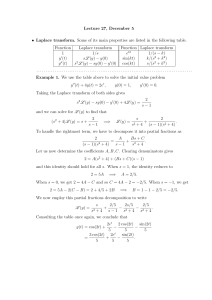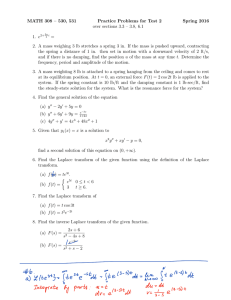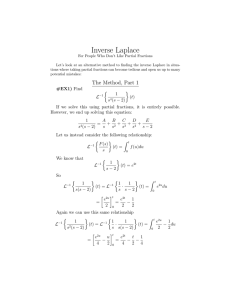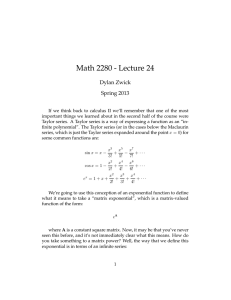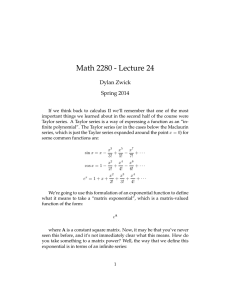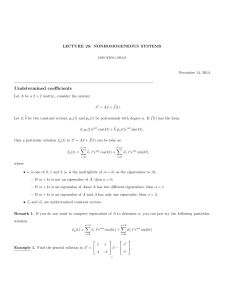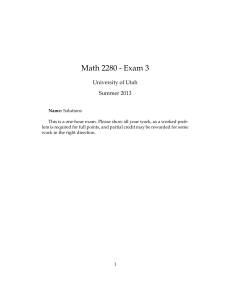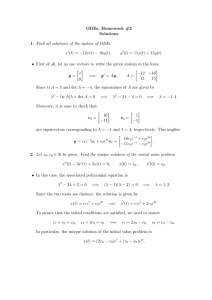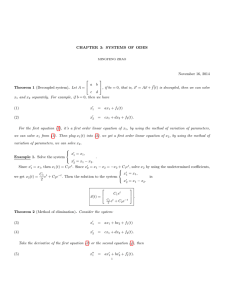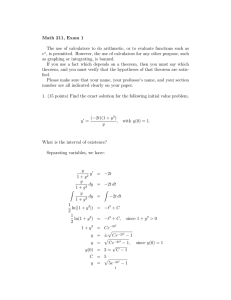Lecture 28, December 7 • f F
advertisement
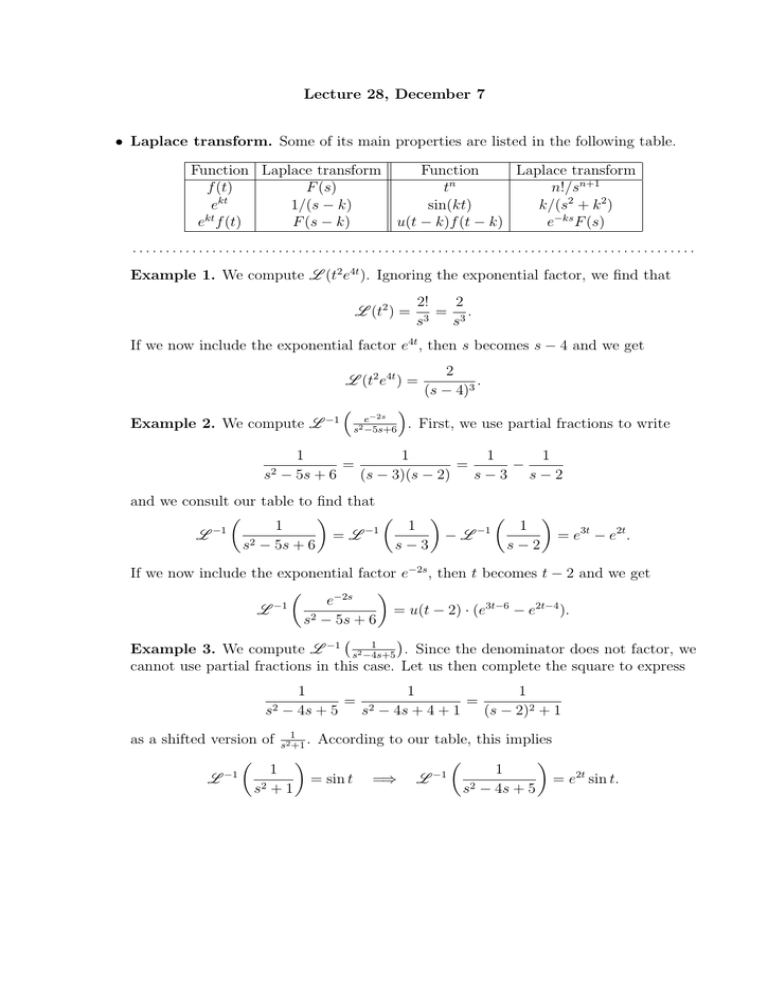
Lecture 28, December 7 • Laplace transform. Some of its main properties are listed in the following table. Function Laplace transform Function Laplace transform n f (t) F (s) t n!/sn+1 ekt 1/(s − k) sin(kt) k/(s2 + k 2 ) kt e f (t) F (s − k) u(t − k)f (t − k) e−ks F (s) ..................................................................................... Example 1. We compute L (t2 e4t ). Ignoring the exponential factor, we find that L (t2 ) = 2! 2 = . s3 s3 If we now include the exponential factor e4t , then s becomes s − 4 and we get L (t2 e4t ) = Example 2. We compute L −1 s2 ( e−2s s2 −5s+6 ) 2 . (s − 4)3 . First, we use partial fractions to write 1 1 1 1 = = − − 5s + 6 (s − 3)(s − 2) s−3 s−2 and we consult our table to find that ( ) ( ) ( ) 1 1 1 −1 −1 −1 L =L −L = e3t − e2t . s2 − 5s + 6 s−3 s−2 If we now include the exponential factor e−2s , then t becomes t − 2 and we get ( ) e−2s −1 L = u(t − 2) · (e3t−6 − e2t−4 ). 2 s − 5s + 6 ( 1 ) Example 3. We compute L −1 s2 −4s+5 . Since the denominator does not factor, we cannot use partial fractions in this case. Let us then complete the square to express s2 1 1 1 = 2 = − 4s + 5 s − 4s + 4 + 1 (s − 2)2 + 1 as a shifted version of s21+1 . According to our table, this implies ( ) ( ) 1 1 −1 −1 L = sin t =⇒ L = e2t sin t. s2 + 1 s2 − 4s + 5

